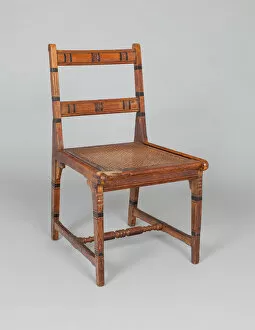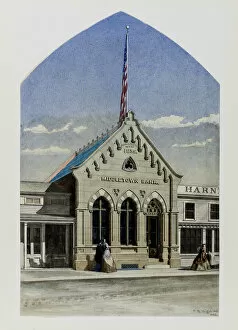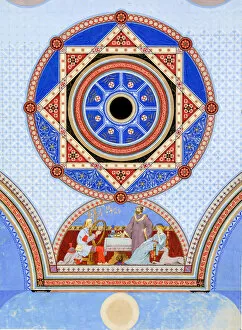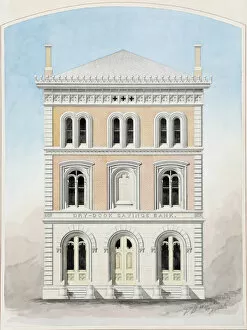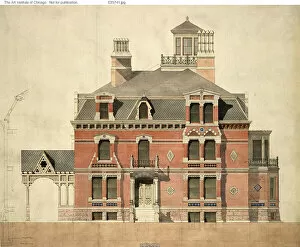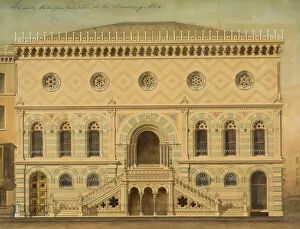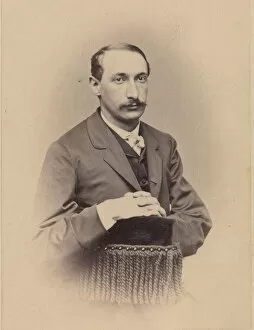Wight P B Collection
Peter Bonnett Wight was a talented architect and designer who left his mark on various buildings and structures across the United States in the 19th century
For sale as Licensed Images
Choose your image, Select your licence and Download the media
Peter Bonnett Wight was a talented architect and designer who left his mark on various buildings and structures across the United States in the 19th century. From grand banks to opera houses, his creations showcased both elegance and functionality. One of Wight's notable works is a dining room chair from 1876. With its intricate design and attention to detail, this chair reflects Wight's skill in combining aesthetics with comfort. It serves as a testament to his ability to create pieces that are not only visually appealing but also practical for everyday use. In addition to furniture design, Wight also made significant contributions to architectural projects. His competition design drawing for the National Park Bank in New York City in 1866 demonstrates his innovative approach towards creating impressive structures that blend seamlessly into their surroundings. Another remarkable example of Wight's work is seen in his perspective drawing of the Middletown Bank in New York from 1862. The illustration showcases how he expertly played with angles and dimensions, resulting in a building that exudes strength and sophistication. Wight's talents were not limited to traditional banking institutions; he also left an indelible mark on cultural landmarks such as the Ottawa Opera House in Illinois. The wall stencil design from around 1875 highlights his ability to infuse artistic elements into architectural spaces, creating an atmosphere that captivates audiences even before they step foot inside. The Dry Dock Savings Bank competition design drawing from 1858 further exemplifies Wight's visionary approach towards architecture. His ability to balance form with function shines through as he creates a structure that harmonizes beautifully with its urban environment while still meeting practical needs. Moving beyond commercial buildings, we see Wight's influence on residential designs like the Eliphalet W. Blatchford House located on LaSalle Street in Chicago. The elevation plan showcases how he blended classical elements with modern sensibilities, resulting in a home that stands out amidst its surroundings. Wight's talents extended beyond the realm of buildings.

